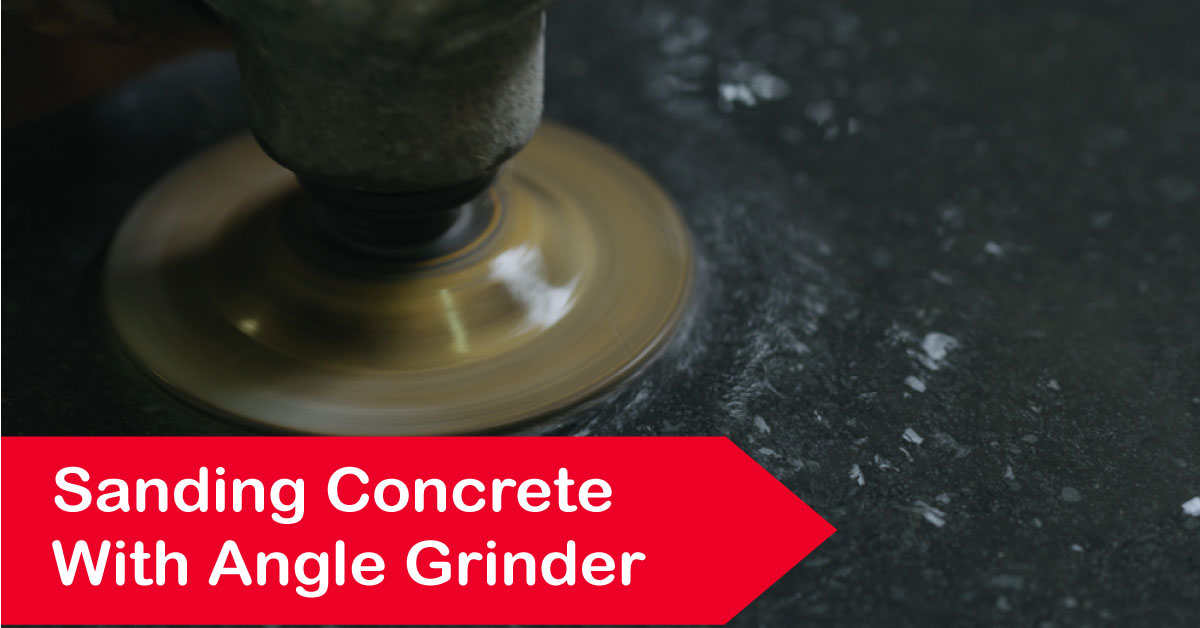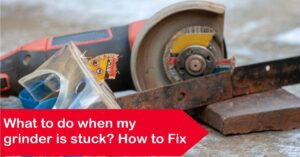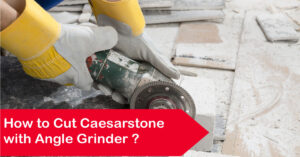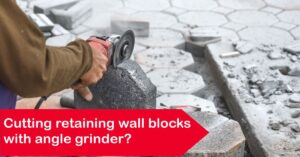Sanding concrete with angle grinder is an easy and cost-effective way to give your concrete surfaces a new lease on life. Whether you’re looking to restore the appearance of old, worn-out concrete or improve the look of your existing surface, sanding can make all the difference. An angle grinder is an ideal tool for sanding because it’s lightweight and simple to use, making it a great choice for DIYers.
An angle grinder equipped with a sanding blade or disc attachment is the perfect tool for removing stains, rust, and paint from concrete surfaces while creating a beautifully polished finish. In this guide, we’ll show you how to sand concrete with an angle grinder and provide some tips to help ensure the best possible results.
Getting Started For Sanding Concrete
Before you start sanding your concrete with an angle grinder, it’s important to make sure you have all the right tools and materials. This will help make the job easier and ensure you get an even finish.
The most important things to have on hand are:
- An angle grinder.
- Abrasive discs
- Protective gear
- Tape measure
- Vacuum
Now that you have all your tools, it’s time to get down to business!
Step By Step Approach for sanding concrete with Angle grinder
Sanding concrete with an angle grinder is a great way to quickly remove old layers of paint, sealant, or other coatings from the surface of the concrete. Sanding also helps to create a smoother finish for painting, staining, or sealing. Here’s what you need to know about sanding concrete with angle grinder:
Step-1: Preparing the surface
Before you begin sanding, make sure that the area to be sanded is free of dirt and debris. Take time to remove any existing paint or coating from the surface, as these will make it difficult for your angle grinder’s abrasive disc to effectively sand away old layers of material.
Step-2: Choosing the right abrasive disc
The type of abrasive disc you should use will depend on the material you are sanding. For example, softer materials such as paint require a coarser grit disc while harder materials like concrete require a finer grit disc. Always check the manufacturer’s instructions to make sure that you are using the correct disc for the job.
Step-3: Protect yourself
Always wear safety goggles and a dust mask when sanding, as flying particles can cause eye injury and respiratory problems if inhaled. Also, ensure to ground your angle grinder before use, and never touch any moving parts while the machine operates.
Step-4: Sanding technique
When sanding with an angle grinder, hold the machine at a slight angle to ensure that the disc is always in contact with the surface. Move slowly and carefully, sanding in overlapping passes until you have achieved the desired finish.
Step-5: Clean up
After sanding, vacuum or sweep away any remaining dust particles from the concrete surface. You may also want to use a damp cloth to remove any remaining residue.
Sanding concrete with angle grinder is a fast and effective way to prepare your surfaces for painting, staining, or sealing. By following these steps, you can ensure that you create the perfect finish every time.
How To Select the Right Grit Disc?
Concrete sanding using an angle grinder requires the correct grit disc to get the job done. Selecting the right disk will help ensure a smooth, even finish. Here are some tips for picking the right grit disk for your project.
First, consider how rough your surface is and what type of concrete you’re working with. Select a finer grit disc if you’re working with a rough surface. For instance, if your concrete is really rough, use 40-grit discs for the initial sanding. You can move up to an 80- or 100-grit disc if the surface is smoother.
If you’re working with harder concrete, then start with a coarse grit disk, such as 24- or 40-grit. Start with a finer grit disc like 80- or 120-grit for softer concrete.
Once you’ve selected the appropriate grit disk for your project, it’s time to get started sanding. Make sure you use the correct safety measures and read the user manual for the angle grinder before you begin.
Safety Tips for Working with an Angle Grinder
Taking safety precautions when sanding concrete with angle grinder is extremely important. Here are a few tips for working safely with your machine:
- Always wear protective gear, such as thick gloves and goggles, to protect yourself from flying debris and dust particles.
- Make sure the area is clear of any obstacles and debris before starting the sanding process.
- Make sure your angle grinder has a protective guard in place to keep you safe from sparks or flying objects.
- Start with a lower speed and gradually work up to higher speeds, ensuring that the angle grinder is not under too much strain.
- Use pressure evenly when sanding, and keep a steady hand.
- When sanding, always maintain your grip on the handle, and do not let go until you are finished with the task.
- After you’re done sanding, clean up any dust left behind.
- Make sure to unplug the grinder before cleaning it and store it in a safe place when done.
Following these safety tips can help you have an enjoyable and safe experience sanding concrete with your angle grinder. With the right steps, you can achieve professional results while staying safe!
FAQs
What type of angle grinder should I use for sanding concrete?
When selecting a grinder, it’s important to choose one that has enough power for the job, such as a 9-amp motor or higher. Angle grinders come in various sizes; you should pick one that will fit the job. It’s best to choose a grinder with at least 4 ½ inches in diameter so it can reach deep into corners or edging without running out of power.
What is the best grit of sandpaper for sanding concrete?
The best grit of sandpaper to use for sanding concrete depends on the desired finish. For a smooth, glossy finish, you should use fine-grit sandpaper. For a rougher finish, use medium or coarse-grit paper.
How do I avoid gouging the concrete while sanding?
Sanding concrete with an angle grinder is a relatively straightforward process, but it is easy to gouge the surface of your project if you’re not careful. To avoid this, keep the angle grinder moving at all times and do not apply too much pressure when sanding. Additionally, use a light touch and don’t press down excessively on the angle grinder while sanding.
What type of grinding media should I use?
The most common type of grinding media used for concrete sanding is a diamond cup wheel, with a series of abrasive diamonds embedded in its face. This wheel is designed specifically to grind concrete and other hard materials and can be used both wet and dry. Diamond cup wheels are an effective option for sanding concrete but can be expensive, so if you’re on a budget, consider other options, such as steel wire brushes or grinding stones.
How do I know when the surface is smooth enough?
Generally speaking, coarser abrasives such as 16-grit will produce a rougher finish. A 60-grit will produce a more polished surface as you progress from there. To achieve the desired finish, you should select the correct grade grit for your job and proceed as instructed.
What type of sealant should I use after sanding the concrete?
After sanding your concrete surface, apply a sealant for lasting protection. A premium acrylic-based sealer provides long-term protection against staining and deterioration. Be sure to choose one specifically formulated for the type of concrete surface you have – whether interior or exterior.
Wrapping Up
Now you have a comprehensive guide to sanding concrete with an angle grinder. It’s important to remember that the result of your resurfacing project is determined by how carefully you approach each step. You can produce a beautiful finish on any concrete surface with the right tools, patience, and attention to safety guidelines.
Use only professional-grade sanding discs for the best results, and ensure that all protective gear is always used. By following these steps carefully, you can rest assured that your concrete will receive a stunning makeover for years.




